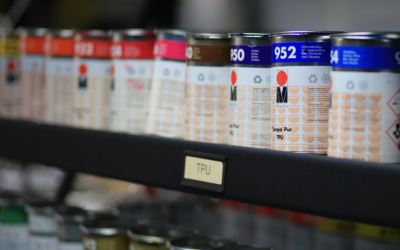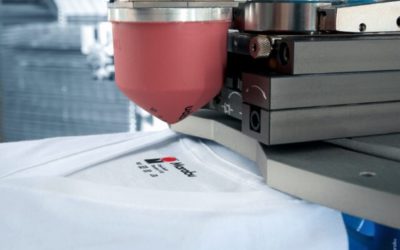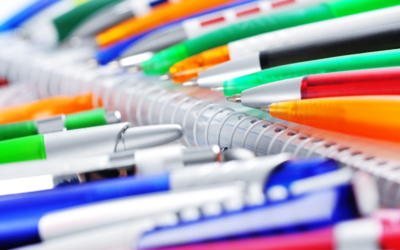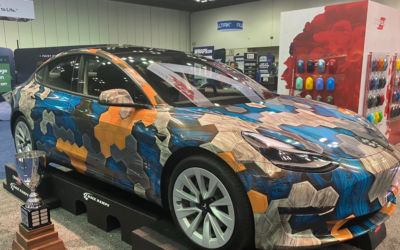Imagine a world where vibrant images and beautiful designs come to life on any surface — from t-shirts and banners to medical devices and automotive parts. This is the transformative power of screen and pad printing, two cornerstone techniques in the printing industry.
Marabu North America is a leader in these printing methods, and their dedication to innovation and quality sets the standard in the industry.
History and Evolution of Screen and Pad Printing
Everything comes from somewhere. To better understand the present and future of screen and pad printing, let’s start by putting everything in the context of their history.
Origins and Development of Screen Printing
Screen printing, with roots stretching back to postclassical China, has a long, rich history. This technique has undergone significant changes since the beginning of the 20th century. The shift from traditional silk screens to synthetic fibers marked a pivotal development, allowing for greater durability and finer detail in prints. This innovation was further enhanced by the introduction of photo-reactive chemicals, which enabled the creation of detailed stencils and broadened the technique’s applications.
In the mid-20th century, the advent of rotary screens and automatic presses revolutionized screen printing. These advances facilitated continuous printing on long materials and increased production speeds, making screen printing more accessible and efficient for mass production.
Evolution of Pad Printing
While screen printing goes back centuries, pad printing is a much younger technique. Pad printing emerged in the mid-20th century, initially developed for the watchmaking industry in Switzerland. Its unique ability to transfer ink from a silicone pad onto irregular surfaces quickly garnered attention from other industries.
Throughout the latter half of the 20th century, pad printing saw significant breakthroughs. The development of advanced silicone pads and specialized inks improved the method’s precision and durability. Innovations such as closed-cup ink systems, which minimized ink exposure to air, further enhanced the quality and consistency of prints. These developments solidified pad printing’s reputation as a critical technique for high-detail, high-quality printing on challenging surfaces.
Techniques and Applications
Screen Printing Applications
Screen printing is renowned for its versatility and durability, making it a popular choice for a wide range of applications, including:
- Textiles: T-shirts, hoodies, and other apparel.
- Signage: Banners, posters, and displays.
- Electronics: Printed circuit boards and membrane switches.
- Glass and Ceramics: Decorative items and functional products like bottles and tiles.
- Advertising: Promotional materials and branded merchandise.
Pad Printing Applications
Pad printing excels in applications where other printing techniques might struggle, including:
- Automotive Parts: Buttons, knobs, and control panels.
- Medical Devices: Syringes, tubes, and surgical instruments.
- Electronics: Keyboards, remote controls, and small components.
- Promotional Items: Pens, keychains, and other branded merchandise.
- Toys and Sporting Goods: Dolls, action figures, and sports equipment.
Comparing Screen and Pad Printing
Screen printing has many strengths and use cases, including:
- Versatility: Screen printing can print on a wide variety of substrates, including textiles, glass, ceramics, and metals.
- Durability: Produces long-lasting, high-quality prints resistant to wear and tear.
- Scalability: Suitable for both small and large production runs.
However, screen printing is limited by a few factors, including its complexity and surface requirements. The technique requires separate screens for each color, making it time-consuming and labor-intensive for multi-colored designs. It is also best suited for flat or slightly curved surfaces, not irregular shapes.
Pad printing, on the other hand, brings a different set of strengths, including:
- Flexibility: Pad printing can print on complex and irregular surfaces that are difficult for other printing methods.
- Precision: Ideal for high-detail and small-area printing.
- Efficiency: Quick setup and execution for multi-color designs.
Pad printing has its own surface compatibility issues, as well as some historic concerns over durability. While versatile, pad printing is not suitable or as efficient as screen printing for large or flat surfaces. And in some cases, pad prints may not be as durable as screen prints.
The Future of Screen and Pad Printing with Marabu
Marabu North America stands at the forefront of the printing industry, offering a range of top-quality products specifically designed for screen and pad printing. Their extensive product line includes:
- Screen Printing Inks: Known for their vibrant colors and exceptional durability, Marabu’s screen printing inks are engineered for various applications — from textiles and signage to electronics and glass. These inks are formulated to withstand harsh environmental conditions, ensuring long-lasting prints.
- Pad Printing Inks: Marabu’s pad printing inks are tailored for precision and versatility, making them ideal for printing on complex surfaces. These inks are widely used in the automotive, medical, and promotional product industries, where high-detail and reliable adhesion are crucial.
- Specialty Coatings: In addition to inks, Marabu offers a range of specialty liquid coatings designed to enhance the durability and appearance of printed materials. These coatings provide additional protection and can be customized for specific applications.
Marabu’s products are trusted by professionals across many industries for their superior quality and performance. Some notable applications include:
- Automotive Industry: Marabu’s pad printing inks are used for printing on car dashboards, buttons, and control panels, ensuring that the prints withstand frequent use and exposure to sunlight.
- Medical Devices: Precision is critical in the medical field, and Marabu’s inks provide the necessary accuracy for printing on syringes, surgical instruments, and other medical equipment, ensuring legibility and durability.
- Electronics: Screen printing inks from Marabu are used in the production of electronic systems and controls, where their durability and reliability are essential.
- Promotional Products: Marabu’s versatile inks are perfect for branding on items such as pens, keychains, and other merchandise, ensuring that the prints remain vibrant and intact through daily use.
Future Trends in Screen and Pad Printing
The printing industry is constantly evolving, and several trends are shaping the future of screen and pad printing:
- Sustainability: There is a growing demand for eco-friendly printing solutions.
- Digital Integration: The integration of digital technologies with traditional printing methods is enhancing efficiency and expanding capabilities.
- Advanced Materials: Innovations in materials science are leading to the development of new substrates and inks that offer enhanced performance characteristics, such as higher durability and better adhesion to challenging surfaces.
Marabu’s Leadership in Innovation
Marabu North America’s commitment to innovation and quality positions them as a leader in the screen and pad printing industry. Their ongoing research and development efforts focus on:
- New Product Development: Marabu continuously invests in developing new inks and coatings that meet the evolving needs of the industry. This includes creating products with improved environmental profiles and enhanced performance characteristics.
- Technological Advancements: By staying at the cutting edge of technology, Marabu ensures that their products incorporate the latest advancements. This includes exploring new printing techniques and integrating digital technologies to enhance traditional methods.
- Customer-Centric Approach: Marabu’s focus on providing exceptional customer service and technical support ensures that their clients receive the best possible solutions for their specific applications. This approach builds long-term relationships and fosters trust in Marabu’s products.
Innovating the Future of Printing
Marabu North America stands as a leader for innovation and quality in screen and pad printing, consistently pushing the boundaries of what is possible in the printing industry. Their commitment to developing high-quality, specialized inks and coatings has set new standards, ensuring superior performance across a multitude of applications.
Choosing high-quality products is crucial for achieving the best results in screen and pad printing. Marabu’s products not only enhance the durability and appearance of prints — they also provide reliability and consistency that professionals in the field demand.
Look at using Marabu’s superior inks and coatings for your printing needs. Whatever industry you’re in, Marabu offers solutions that will elevate your printing processes and outcomes. Trust in Marabu for innovation, quality, and the support you need to achieve excellence in every print.




